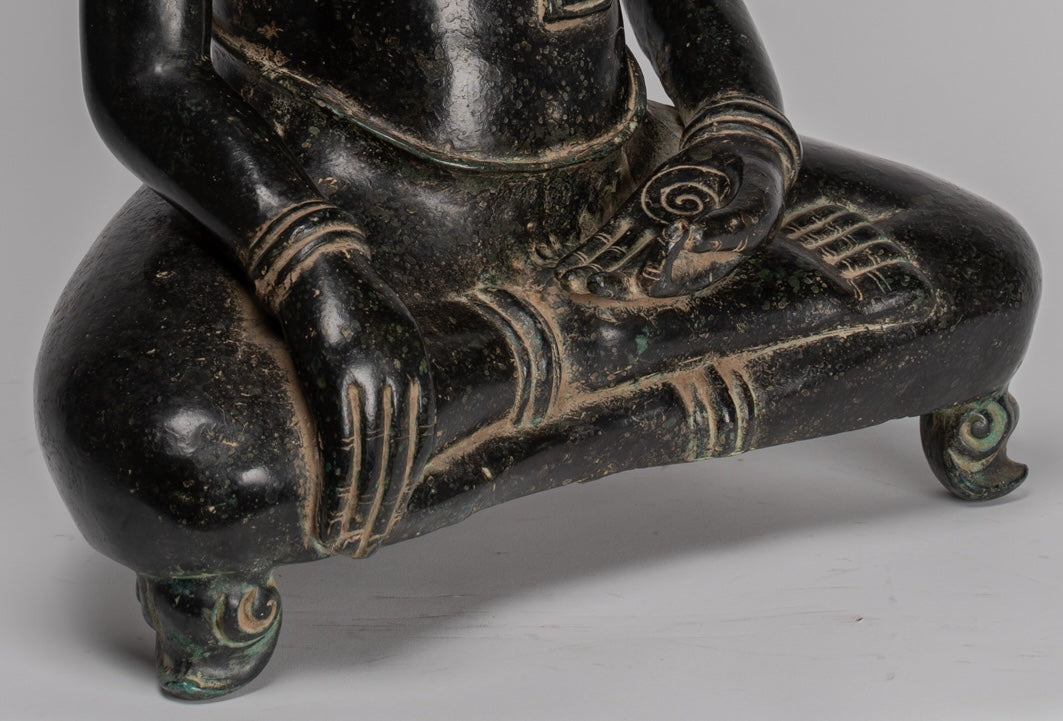
The Enlightenment of the Buddha (588 BCE): Awakening Under the Bodhi Tree
In the quiet heart of India, beneath the outstretched branches of a Bodhi tree in Bodh Gaya, a seeker named Siddhartha Gautama sat in deep meditation. By dawn of that fateful night in 588 BCE, he would arise not as a prince or a renunciant—but as the Buddha, the Enlightened One.
This singular moment in history, revered across Buddhist cultures, marks the spiritual awakening that forever transformed human understanding of suffering, consciousness, and liberation.
The Enlightenment of the Buddha is more than a historic milestone. It is the foundation of Buddhism itself—the wellspring from which the Dharma (Buddha’s teachings) flows, and the central inspiration for practitioners across centuries and cultures.
The Journey to the Bodhi Tree
Before his enlightenment, Siddhartha Gautama had already lived a life of both privilege and hardship. Born into royalty in 623 BCE, he was shielded from the harsh realities of the world until he encountered the “Four Sights”: an old man, a sick person, a corpse, and a wandering ascetic. These glimpses of impermanence and suffering awakened his spiritual quest.
He renounced his royal life at age 29 and embarked on a rigorous journey of meditation and asceticism. For six years, Siddhartha practiced extreme self-denial in the forests, believing that mortifying the body would purify the soul. But ultimately, he realized that neither indulgence nor self-mortification could lead to true liberation.
This insight led him to adopt what would later be called the Middle Way—a balanced path between extremes. He accepted nourishment, regained strength, and walked to the banks of the Neranjara River near Bodh Gaya, where he sat under a fig tree, vowing not to rise until he had discovered the truth.
The Night of Enlightenment
The night of Siddhartha’s enlightenment is described in vivid and symbolic detail in Buddhist texts. Over the course of this sacred night, he passed through three stages of higher knowledge, collectively called the three knowledges (tevijjā):
1. The First Watch of the Night:
He recalled his past lives in great detail, understanding the endless cycle of samsara—birth, death, and rebirth.
2. The Second Watch:
He perceived the karmic causes of rebirth and the workings of karma across beings, seeing how actions determine future lives.
3. The Third Watch:
He realized the Four Noble Truths and fully comprehended the nature of dukkha (suffering), its cause, its cessation, and the path that leads to its end.
At the break of dawn, Siddhartha achieved Nibbāna (Nirvana)—the extinction of greed, hatred, and delusion. He became the Buddha, the Awakened One, having attained perfect wisdom and compassion.
The Four Noble Truths: The Essence of Enlightenment
The Buddha’s awakening centered on his realization of the Four Noble Truths:
-
Dukkha – Life involves suffering, dissatisfaction, and impermanence.
-
Samudaya – This suffering is caused by craving and attachment.
-
Nirodha – There is an end to suffering—Nibbāna is possible.
-
Magga – The Eightfold Path is the way to end suffering.
These truths became the foundation of the Dhamma, guiding millions of followers in their quest for liberation.
The Bodhi Tree: A Living Symbol
The Bodhi Tree, under which the Buddha attained enlightenment, became a symbol of spiritual awakening and resilience. The original tree in Bodh Gaya, India, is venerated to this day, and saplings from it have been planted in Buddhist temples across Asia—including Wat Phra Sri Mahathat in Thailand and Wat Phnom in Cambodia.
The tree’s enduring presence represents:
-
Steadfastness in meditation.
-
The interconnectedness of life.
-
The unshakable resolve to seek truth.
Artistic and Cultural Representations
Across Buddhist cultures, the enlightenment of the Buddha is depicted in sculptures, murals, and rituals. In Khmer art, he is often shown seated in dhyana mudra (meditation posture), under the canopy of the Bodhi tree, sometimes with Mucalinda the serpent coiling beneath him to shield him from storms.
In Thai temples, statues of the Buddha in the "subduing Mara" pose are common. Here, he is depicted touching the earth with his right hand, calling the Earth Goddess to witness his right to attain enlightenment—a powerful act symbolizing triumph over illusion and internal demons.
Enlightenment in the Theravāda Tradition
In Theravāda Buddhism, followed widely in Thailand, Cambodia, Laos, and Sri Lanka, the Buddha’s enlightenment is regarded as the culmination of countless lifetimes of perfection (pāramī).
The Enlightenment is commemorated annually on Visakha Bucha Day, celebrated with:
-
Meditation and Dharma talks in temples.
-
Candlelight processions around stupas and sacred grounds.
-
Reflection on the Middle Way and personal ethical conduct.
In Cambodia, monks often chant the story of the Buddha’s enlightenment, and devotees practice Dana (generosity) and Sīla (moral discipline), reinforcing the connection between the Buddha’s insight and everyday life.
Why the Enlightenment Matters Today
The Buddha’s enlightenment is not merely a spiritual milestone from the past—it is a living possibility for every human being. His awakening serves as a mirror, showing us:
-
The nature of suffering in modern life—stress, fear, restlessness.
-
The cause of this suffering—clinging to impermanent things.
-
The freedom that comes from letting go.
-
A path of mindful living, grounded in ethics, compassion, and wisdom.
His message endures because it speaks to the core of human experience—and offers a practical method for transforming it.
Conclusion: A Light for the World
The Enlightenment of the Buddha in 588 BCE was not the end of a journey, but the beginning of a timeless teaching. From the shaded Bodhi tree in India to serene temples in Thailand and Cambodia, the echo of that awakening still calls to the hearts of seekers.
In remembering the Buddha’s Enlightenment, we are reminded that true peace does not lie outside of ourselves, but within. Through mindfulness, compassion, and insight, we too can begin to wake up—to our minds, our actions, and the precious opportunity of being alive.


